 CIMTEC 2014 - 13th International Conference on Modern Materials and Technologies -was held in Montecatini Terme, Tuscany, Italy, June 8 to 19, 2014.
CIMTEC 2014 - 13th International Conference on Modern Materials and Technologies -was held in Montecatini Terme, Tuscany, Italy, June 8 to 19, 2014.
CIMTEC 2014 consisted of the 13th International Ceramics Congress (June 8-13) and of the 6th Forum on New Materials (June 15-19), each of them including a number of Symposia, Special Sessions, and Conferences.
As a major long standing event for the international materials community, CIMTEC again gathered together a large and qualified audience of materials scientists, physicists, chemists and engineers as well as of experts of a wide range of the most demanding application areas of modern materials, from the molecular and nanoscales to large complex integrated systems.
Nanomaterials Group from Drexel Nanomaterials Institute of Drexel University, USA, lead by professor Yury Gogotsi visited International Conference on Modern Materials and Technologies CIMTEC 2014 in Montecatini Terme, to take part in the 13th International Ceramics Congress and the 6th Forum on New Materials.
13th International Ceramics Congress, June 8-13 2014
SYMPOSIUM CG
PROGRESS IN NANO-LAMINATED TERNARY CARBIDES AND NITRIDES (MAX PHASES) AND DERIVATIVES THERE OF (MXENES)
CG:HP02 Optical and Electronic Properties of Two-dimensional Ti3C2 Epitaxial Thin Films (Hot Poster)
J. HALIM1,2,3, M.R. Lukatskaya1,2, K.M. Cook1,2, Jun Lu3, C.R. Smith1,2,L.-A. Näslu nd3, S.J. May1, L. Hultman3, Y. Gogotsi1,2, P. Eklu nd3, M.W.Barsoum1, 1Dept. of Materials Science & Engineering, Drexel University,Philadelphia, PA, USA; 2A.J. Drexel Nanotechnology Institute, Drexel University, Philadelphia, PA, USA, Dept. of Materials Science & Engineering, Drexel University, Philadelphia, PA, USA; 3Thin Film Physics Division, Dept. of Physics, Chemistry and Biology (IFM), Linköping University, Linköping, Sweden
Abstract
Since the discovery of graphene, two-dimensional (2D) materials receive growing interest because of their unique properties as compared to their bulk counterparts. Although graphene has garnered the lion’s share of this attention, other 2D materials beyond MoS2 and BN are being sought out. Recently, a new family of 2D materials of early transition metal carbides and carbonitrides (Ti2C, Ti3C2, Ti3CN, V2C, Nb2C, Ta4C3 and more) known as MXenes has been discovered. Herein we show the fabrication of a 2D epitaxial Ti3C2 thin film, formed by the selective etching of Al from magnetron sputter-grown Ti3AlC2.
The optical transmittance, electrical resistivity, and magnetoresistance of the films were also measured. These data show that the films are up to ~ 90% transparent in the visible to infrared range, and that metallic-like conductive behavior is exhibited down to ~ 100 K. At temperatures below 100 K, resistivity of the films increased with decreasing temperature and magnetoresistance proved to be negative, due to a weak localization phenomenon characteristic of 2D films. These results illustrate the potential for the use of Ti3C2 thin films as transparent conductive electrodes, as well as in electrical, photonic and sensing applications.
CG-5:IL01 MXenes: 2D hosts for Ions in Electrochemical Energy Storage Systems M. Naguib, M. Lukatskaya, o. Mashtalir, Y. Gogotsi, M. Barsoum, Department of Materials science & engineering, and A.J. Drexel Nanotechnology Institute, Drexel University, Philadelphia, Pa, USA
Abstract
Recently we developed a new family of two-dimensional (2D) early transition metal carbides and carbonitrides, that we labeled MXenes. MXenes are produced by selective etching of the A-group layers from MAX phases. The latter is a large family of ternary layered metal carbides and/or nitrides. The etching process is carried out in an aqueous hydrofluoric acid. Thus, the as synthesized MXenes surface is terminated by O, OH and/or F. To date the following MXenes have been produced: Ti3C2, Ti2C, V2C, Nb2C, Ta4C3, TiNbC, (V0.5Cr0.5)3C2, and Ti3CN. Unlike conventional transition metal carbides, MXenes were found to be promising electrode materials in lithium-ions batteries (LIBs).
MXenes showed an excellent ability to handle cycling rates that are considerably faster than commercial graphite anodes can handle in LIBs (up to 40C). MXenes can also be used in electrochemical capacitors. At >300 F/cm3, the volumetric capacitance of MXenes was superior to that of activated carbon – the material of choice at this time. Herein we report on the latest progress in synthesis and use of MXenes as hosts for ions in electrochemical energy storage systems.
6th Forum on New Materials, June 15-19 2014
Symposium FC
Electrochemical Energy Storage Systems: the Next Evolution
FC-2:L05 Effect of Cation on Diffusion Coefficient of Ionic Liquids at Onion-like Carbon Electrodes
K. VAN AKEN1, J.K. MCDONOUGH1, SONG LI2, GUANG FENG2, S.M. CHATHOTH3, 5, E. MAMONTOV3, P.F. FULVIO4, P.T. CUMMINGS2, SHENG DAI4, Y. GOGOTSI1, 1Department of Materials Science and Engineering & A.J. Drexel Nanotechnology Institute, Drexel University, Philadelphia, PA, USA; 2Department of Chemical and Biomolecular Engineering, Vanderbilt University, Nashville, TN, USA; 3Chemical and Engineering Materials Division, Neutron Sciences Directorate, Oak Ridge National Laboratory, Oak Ridge, TN, USA; 4Chemical Science Division, Oak Ridge National Laboratory, Oak Ridge, TN, USA; 5Department of Physics and Materials Science, City University of Hong Kong, Hong Kong, China
Abstract
While most supercapacitors are limited in their performance by the electrolyte stability, using neat ionic liquids (ILs) can expand the voltage window and temperature range of operation. Three different techniques were used to investigate the characteristics of three ILs in a comprehensive approach for a new field of electrolytes. Exohedral onion-like carbon (OLC) was chosen as the electrode material, allowing the behavior of ILs to be investigated without the influence of the carbon structure. In this study, ILs with bis(trifluoromethylsulfonyl)imide as anion were investigated as the electrolyte in OLC-based electrochemical capacitors.
To probe the effect of cations on the electrochemical performance of supercapacitors, three different cations were used: 1-ethyl-3-methylimidazolium, 1-hexyl-3-methylimidazolium, and 1,6-bis(3-methylimidazolium-1-yl). A series of electrochemical characterization tests were performed. Diffusion coefficients were measured using electrochemical impedance spectroscopy and correlated with quasielastic neutron scattering and molecular dynamics simulation. The IL with the smaller sized cation had a larger diffusion coefficient, leading to higher capacitance at faster cycling rates. Electrolyte performance was also correlated with increasing temperature.
Source: www.cimtec-congress.org
Related Items:
12th International Ceramics Congress CIMTEC 2010, Montecatini Terme, Florence, Italy 6-18, June 2010





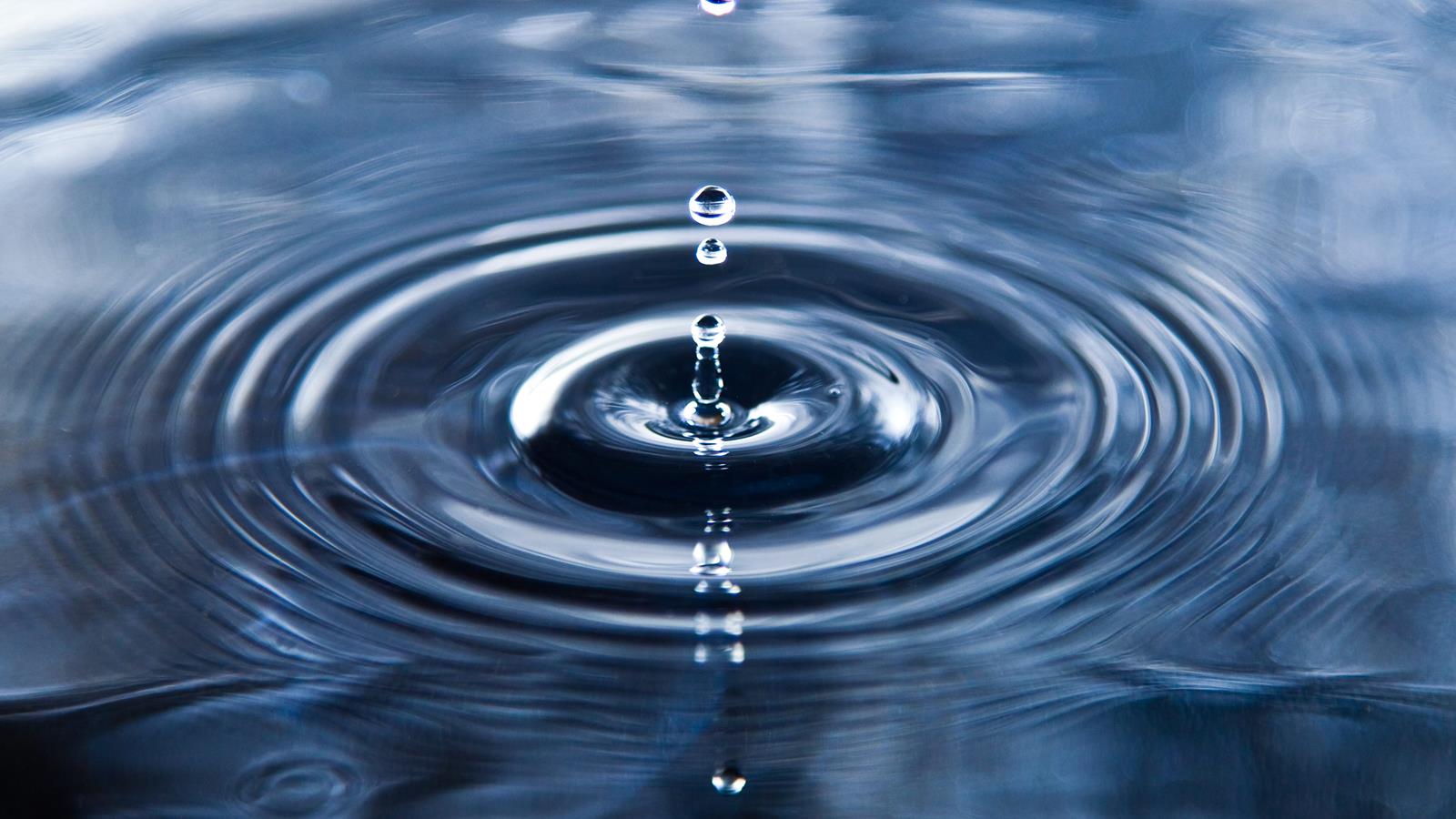
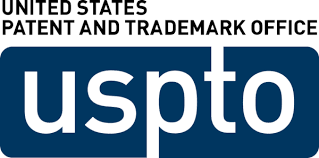 Exellent news, our joint patent application with Drexel University on highly porous MAX phase precursor for MXene synthesis published. Congratulations and thanks to all team involved!
Exellent news, our joint patent application with Drexel University on highly porous MAX phase precursor for MXene synthesis published. Congratulations and thanks to all team involved! Last Call! Have you submitted your abstract for IEEE NAP-2025 yet? Join us at the International Symposium on "The MXene Frontier: Transformative Nanomaterials Shaping the Future" – the largest MXene-focused conference in Europe this year! Final Submission Deadline: May 15, 2025. Don’t miss this exclusive opportunity to showcase your research and engage with world leaders in the MXene field!
Last Call! Have you submitted your abstract for IEEE NAP-2025 yet? Join us at the International Symposium on "The MXene Frontier: Transformative Nanomaterials Shaping the Future" – the largest MXene-focused conference in Europe this year! Final Submission Deadline: May 15, 2025. Don’t miss this exclusive opportunity to showcase your research and engage with world leaders in the MXene field!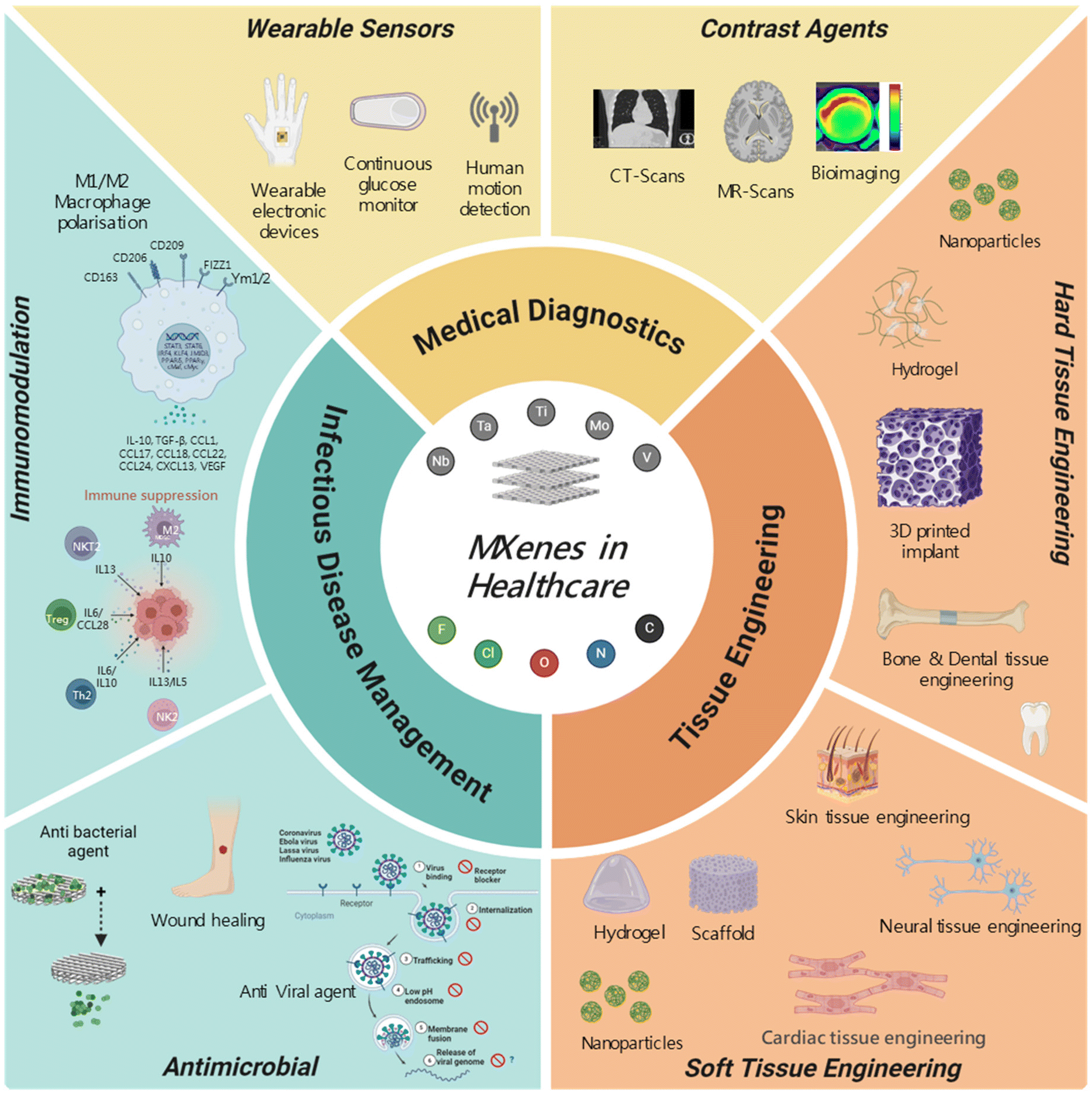 We are excited to announce the publication of latest review article on MXenes in Healthcare. This comprehensive review explores the groundbreaking role of MXenes—an emerging class of 2D materials—in revolutionizing the fields of medical diagnostics and therapeutics. Read the full article here: https://doi.org/10.1039/D4NR04853A.
We are excited to announce the publication of latest review article on MXenes in Healthcare. This comprehensive review explores the groundbreaking role of MXenes—an emerging class of 2D materials—in revolutionizing the fields of medical diagnostics and therapeutics. Read the full article here: https://doi.org/10.1039/D4NR04853A.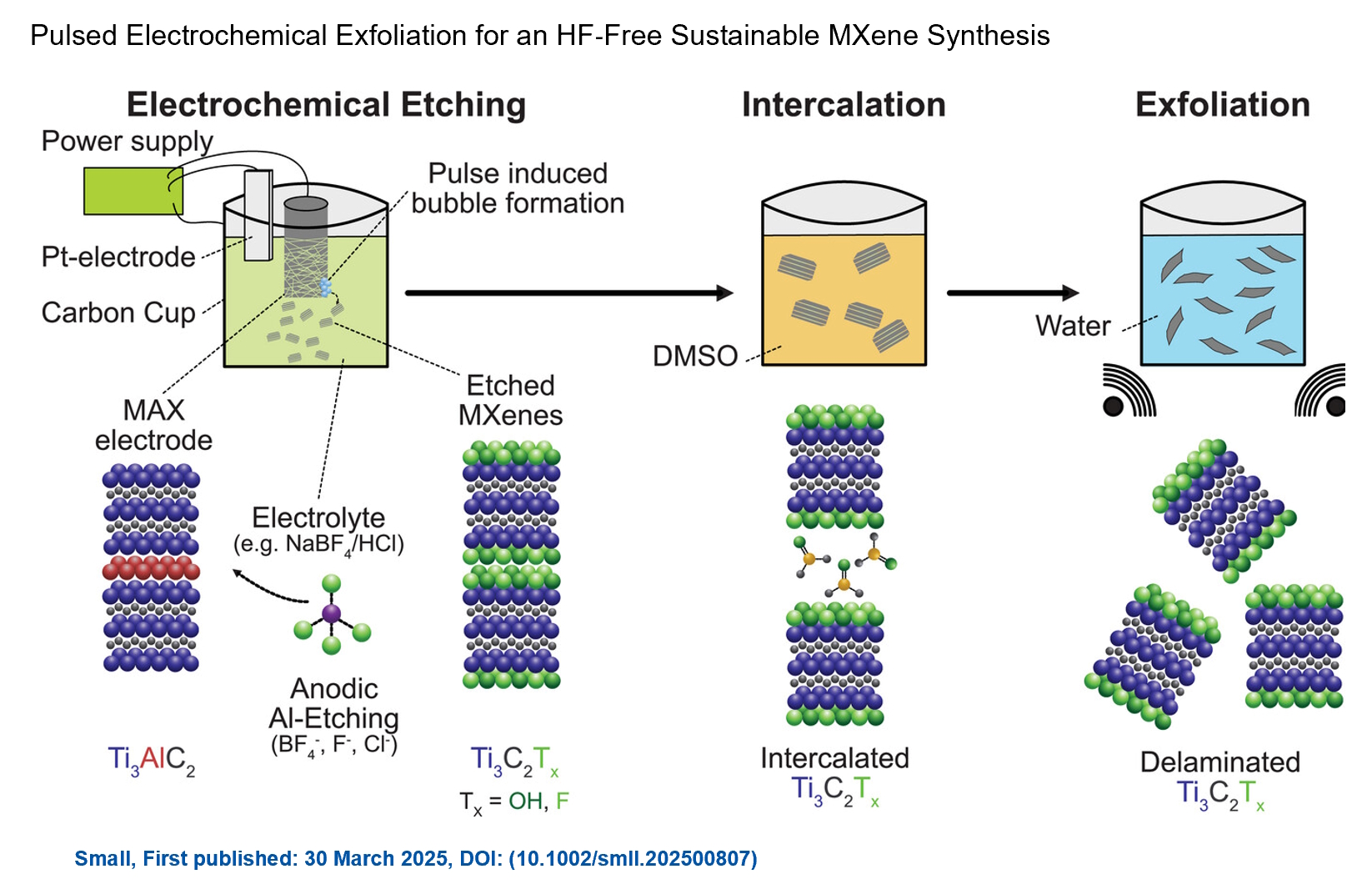 Congratulations and thank you to our collaborators from TU Wien and CEST for very interesting work and making it published! In this work, an upscalable electrochemical MXene synthesis is presented. Yields of up to 60% electrochemical MXene (EC-MXene) with no byproducts from a single exfoliation cycle are achieved.
Congratulations and thank you to our collaborators from TU Wien and CEST for very interesting work and making it published! In this work, an upscalable electrochemical MXene synthesis is presented. Yields of up to 60% electrochemical MXene (EC-MXene) with no byproducts from a single exfoliation cycle are achieved. Congratulations to all collaborators with this interesting joint work!
Congratulations to all collaborators with this interesting joint work! Thank you to our collaborators for the amazing joint work recently published in Graphene and 2D Nanomaterials about MXene–silk fibroin composite films aiming to develop materials with tunable electronic and thermal properties
Thank you to our collaborators for the amazing joint work recently published in Graphene and 2D Nanomaterials about MXene–silk fibroin composite films aiming to develop materials with tunable electronic and thermal properties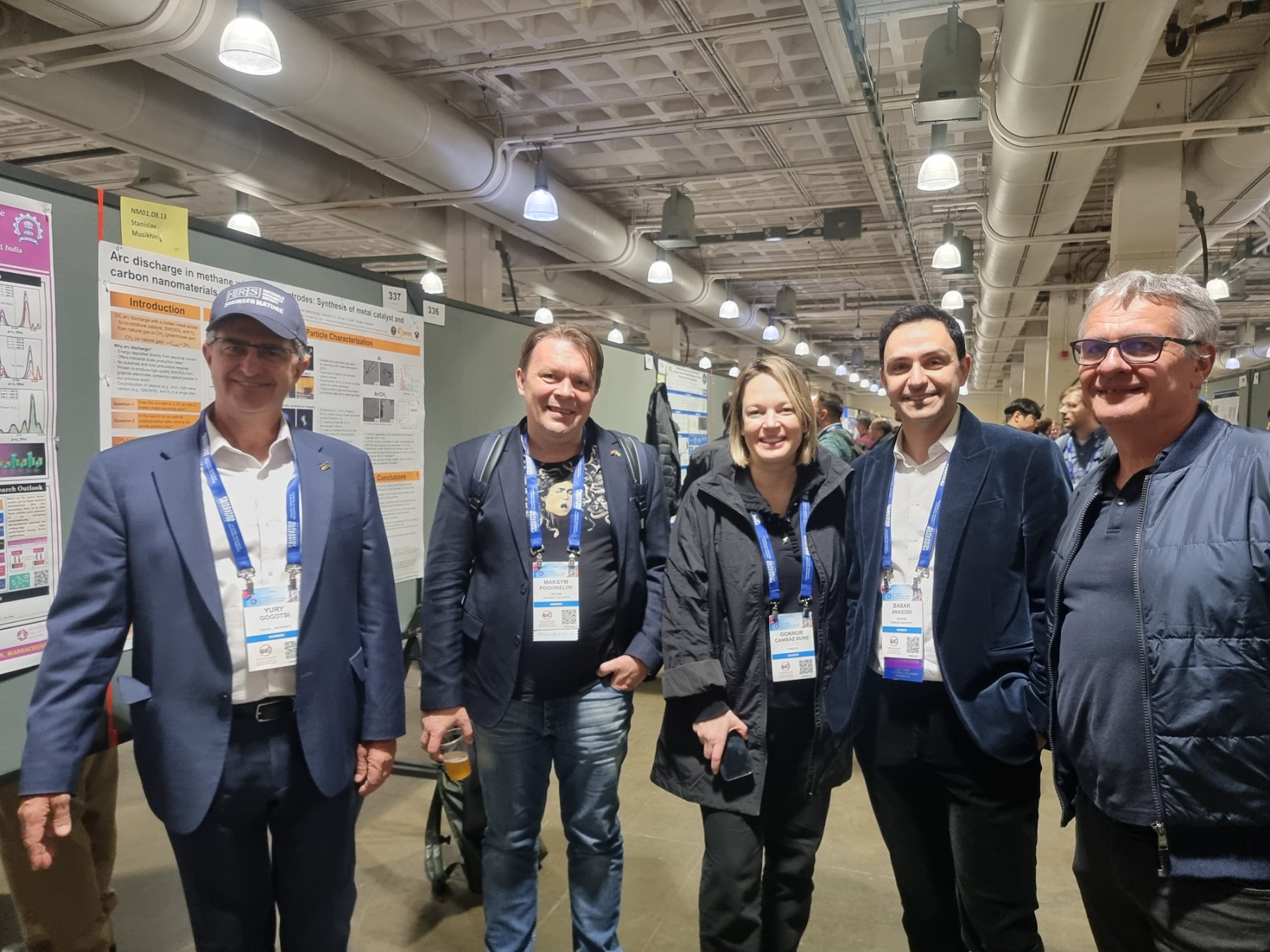 Dr. Oleksiy Gogotsi, director of MRC and Carbon-Ukraine, innovative companies that are among the leaders on the world MXene market, visited 2024 MRS Fall Meeting & Exhibit. together with Dr. Maksym Pogorielov, Head of Advanced Biomaterials and Biophysics Laboratory, University of Latvia.
Dr. Oleksiy Gogotsi, director of MRC and Carbon-Ukraine, innovative companies that are among the leaders on the world MXene market, visited 2024 MRS Fall Meeting & Exhibit. together with Dr. Maksym Pogorielov, Head of Advanced Biomaterials and Biophysics Laboratory, University of Latvia.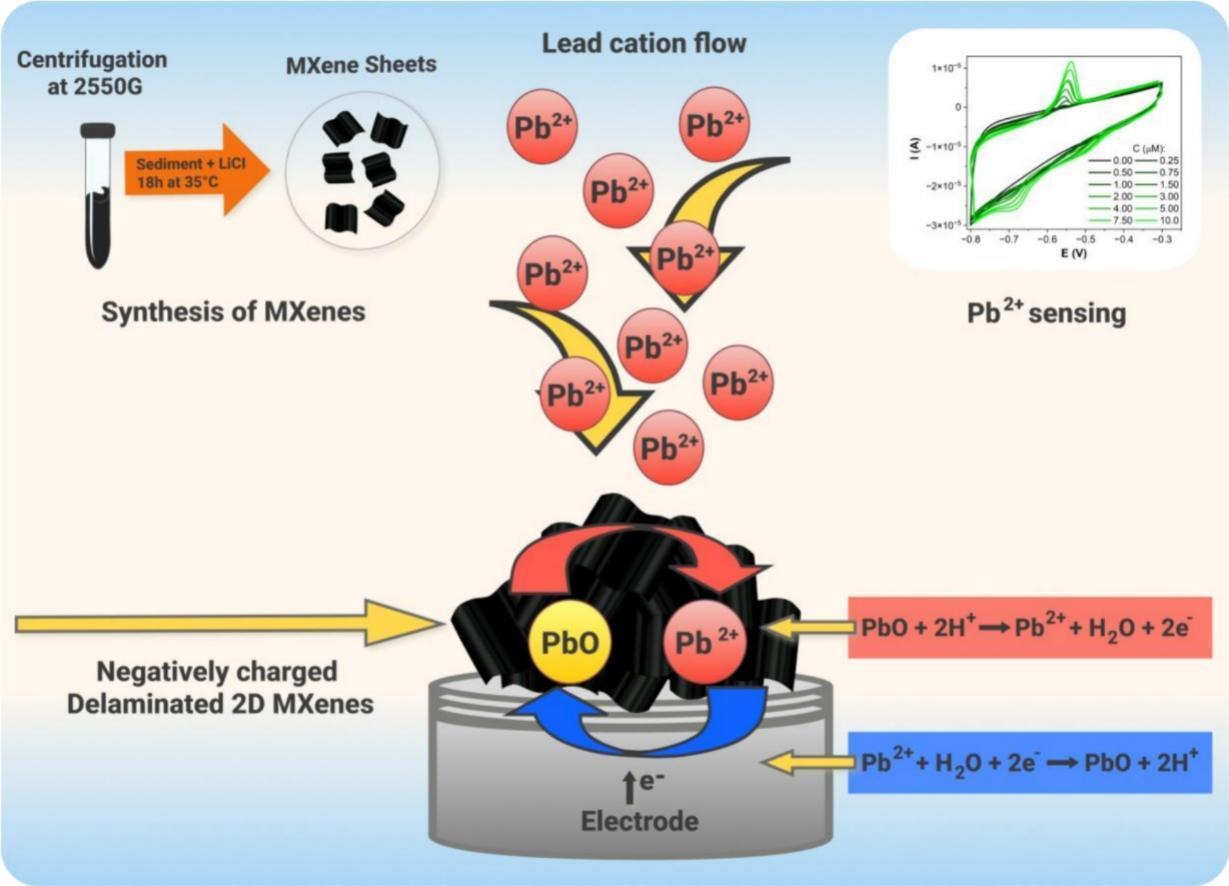
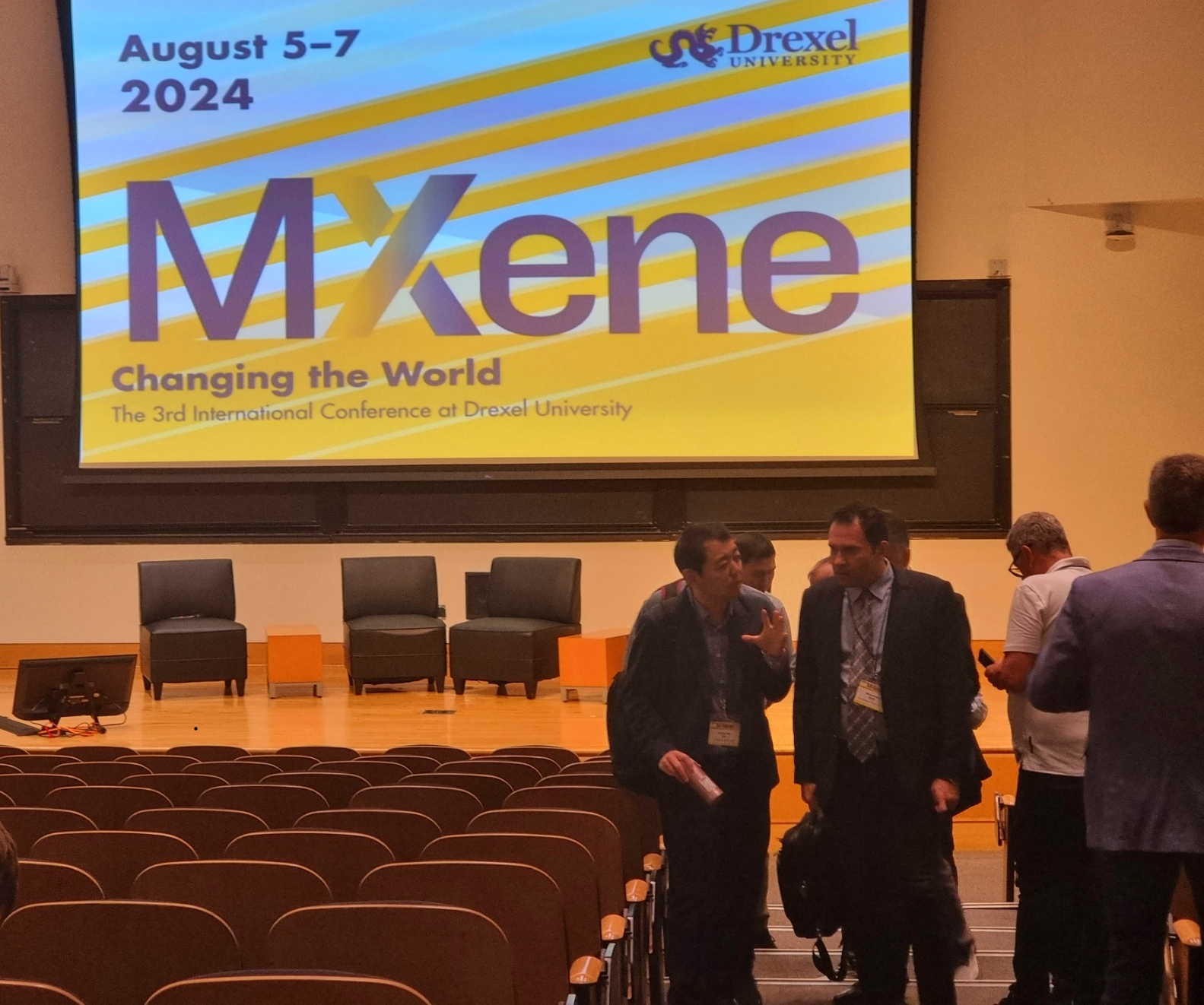 MRC and Carbon-Ukraine team visited the 3rd International MXene conference held at Drexel University on August 5-8, 2024. Conference brought together the best reserchers and leading experts on MXene field.
MRC and Carbon-Ukraine team visited the 3rd International MXene conference held at Drexel University on August 5-8, 2024. Conference brought together the best reserchers and leading experts on MXene field. 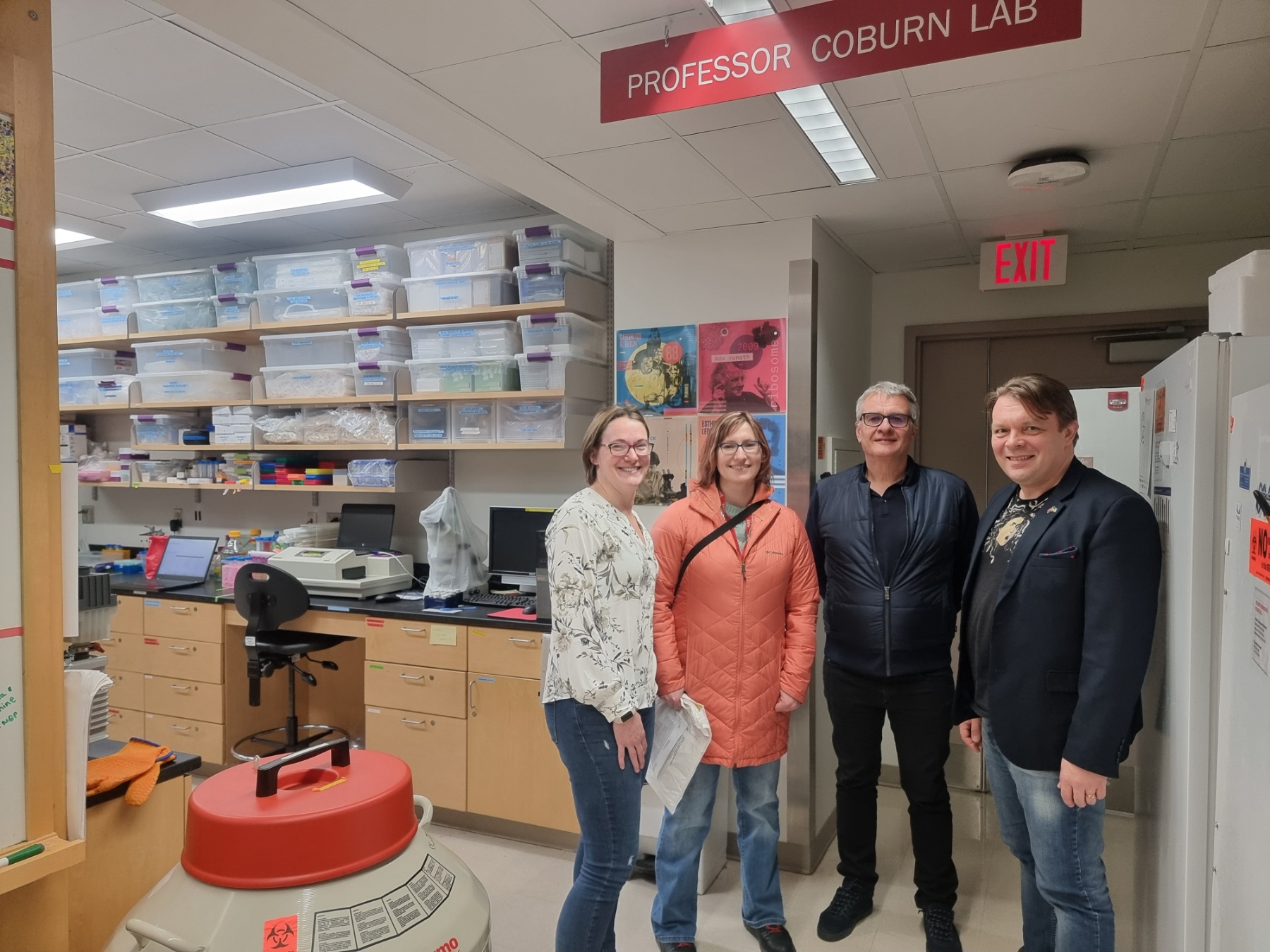
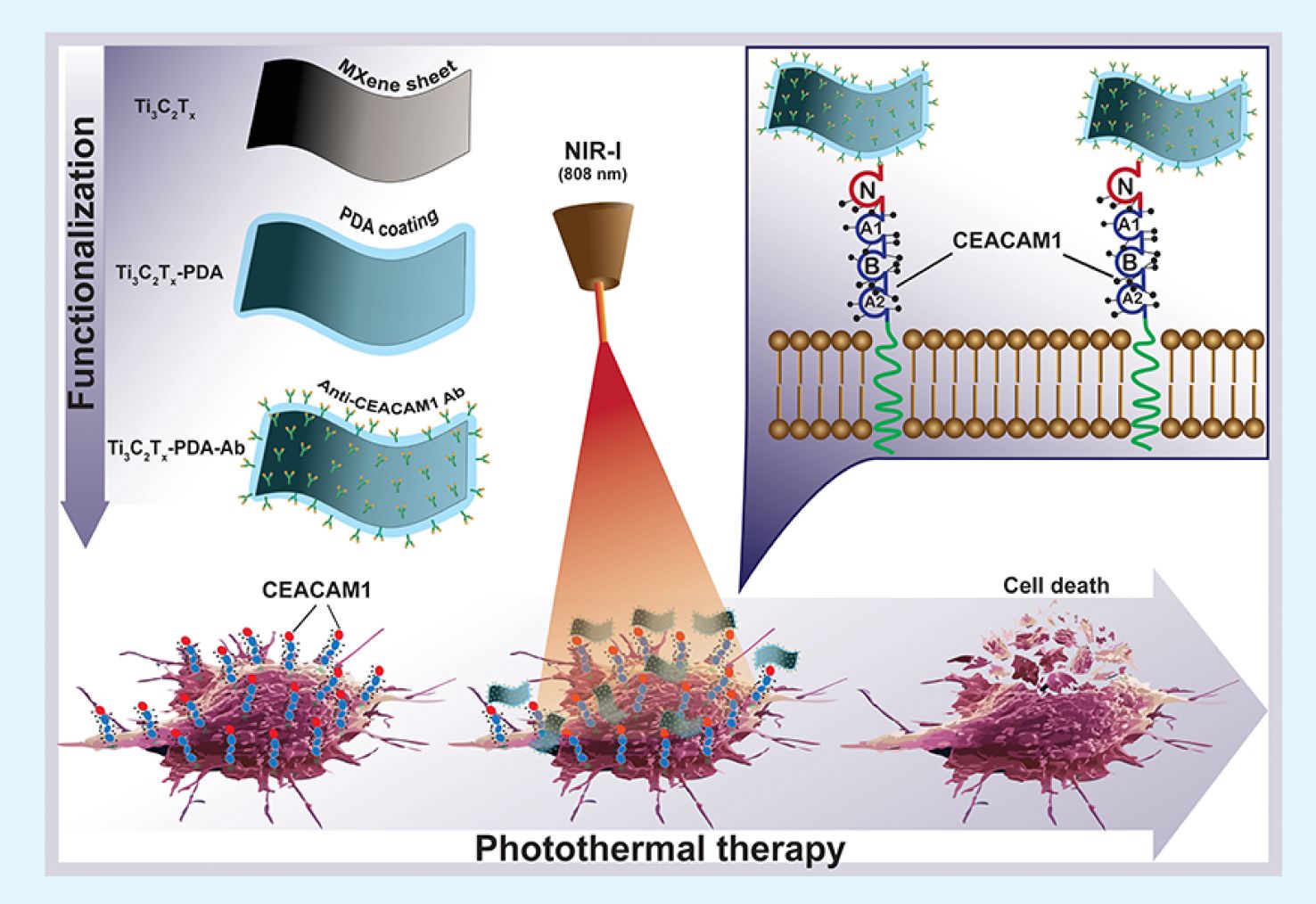 Together with colleagues from the University of Latvia, MRC/Carbone Ukraine, Adam Mickiewicz University, University Clinic Essen, and others, we have developed a novel concept involving the binding of antibodies to MXenes. In our research, we utilized anti-CEACAM1 antibodies to develop targeted photo-thermal therapy for melanoma (in vitro), paving the way for future in vivo studies and clinical trials. For the first time, we demonstrate the feasibility of delivering MXenes specifically targeted to melanoma cells, enabling the effective ablation of cancer cells under near-infrared (NIR) light. This new technique opens up vast potential for the application of MXenes in cancer treatment, diagnostics, drug delivery, and many other medical purposes.
Together with colleagues from the University of Latvia, MRC/Carbone Ukraine, Adam Mickiewicz University, University Clinic Essen, and others, we have developed a novel concept involving the binding of antibodies to MXenes. In our research, we utilized anti-CEACAM1 antibodies to develop targeted photo-thermal therapy for melanoma (in vitro), paving the way for future in vivo studies and clinical trials. For the first time, we demonstrate the feasibility of delivering MXenes specifically targeted to melanoma cells, enabling the effective ablation of cancer cells under near-infrared (NIR) light. This new technique opens up vast potential for the application of MXenes in cancer treatment, diagnostics, drug delivery, and many other medical purposes.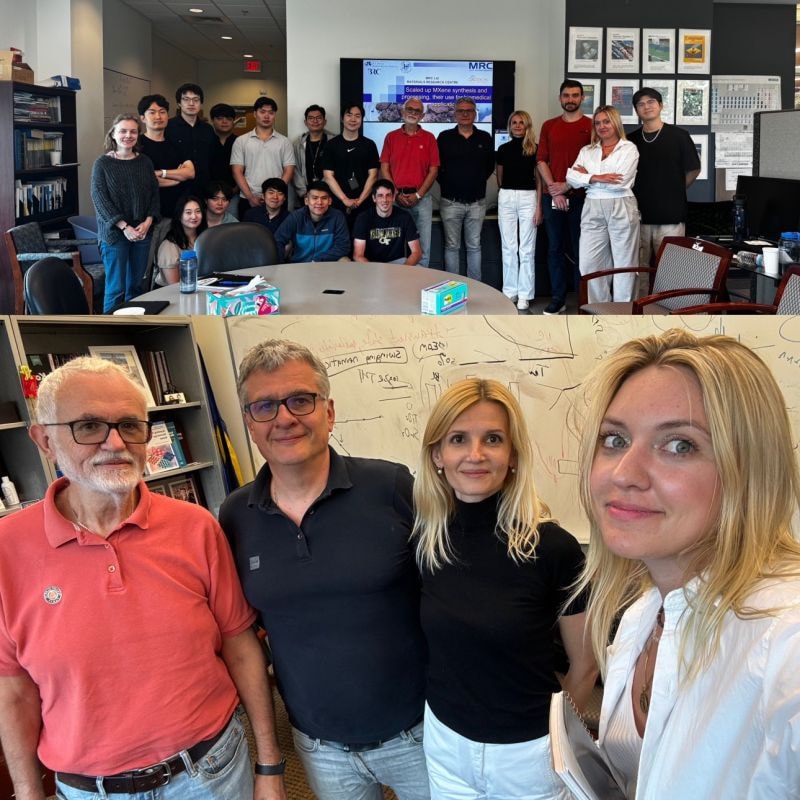

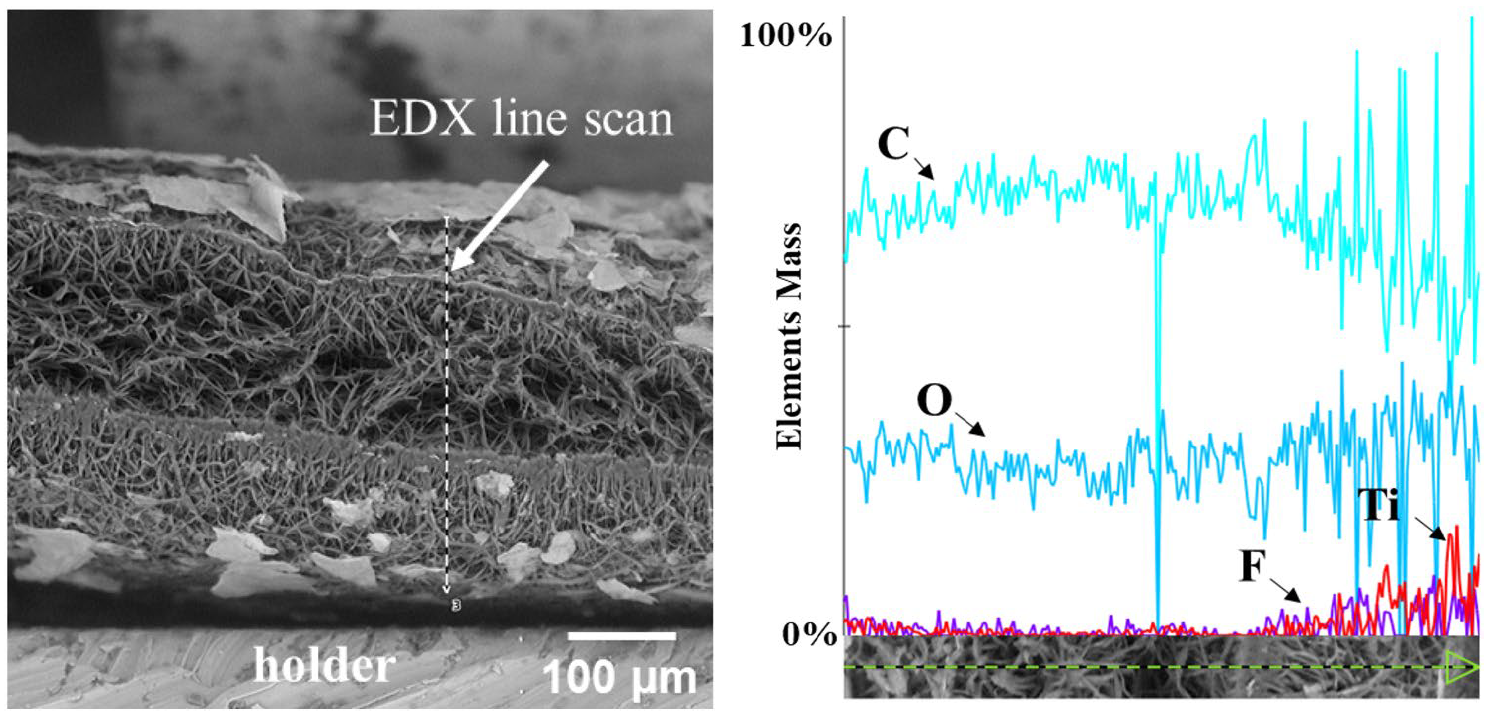 Here we demonstrate a new developed method for depositing Ti3C2Tx MXenes onto hydrophobic electrospun PCL membranes using oxygen plasma treatment. These novel patches hold tremendous potential for providing mechanical support to damaged heart tissue and enabling electrical signal transmission,thereby mimicking the crucial electroconductivity required for normal cardiac function. After a detailed investigation of scaffold-to-cell interplay, including electrical stimulation, novel technology has the potential for clinical application not only for cardiac regeneration, but also as neural and muscular tissue substitutes.
Here we demonstrate a new developed method for depositing Ti3C2Tx MXenes onto hydrophobic electrospun PCL membranes using oxygen plasma treatment. These novel patches hold tremendous potential for providing mechanical support to damaged heart tissue and enabling electrical signal transmission,thereby mimicking the crucial electroconductivity required for normal cardiac function. After a detailed investigation of scaffold-to-cell interplay, including electrical stimulation, novel technology has the potential for clinical application not only for cardiac regeneration, but also as neural and muscular tissue substitutes.